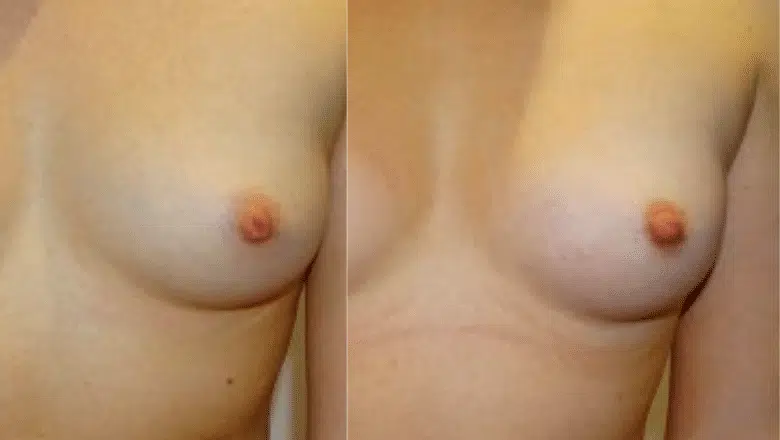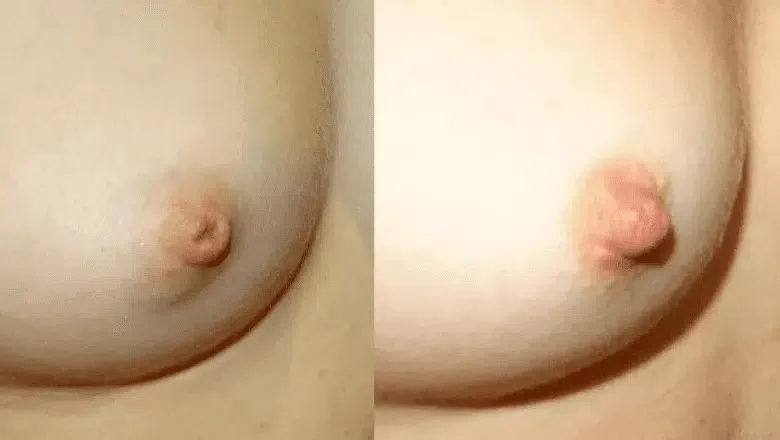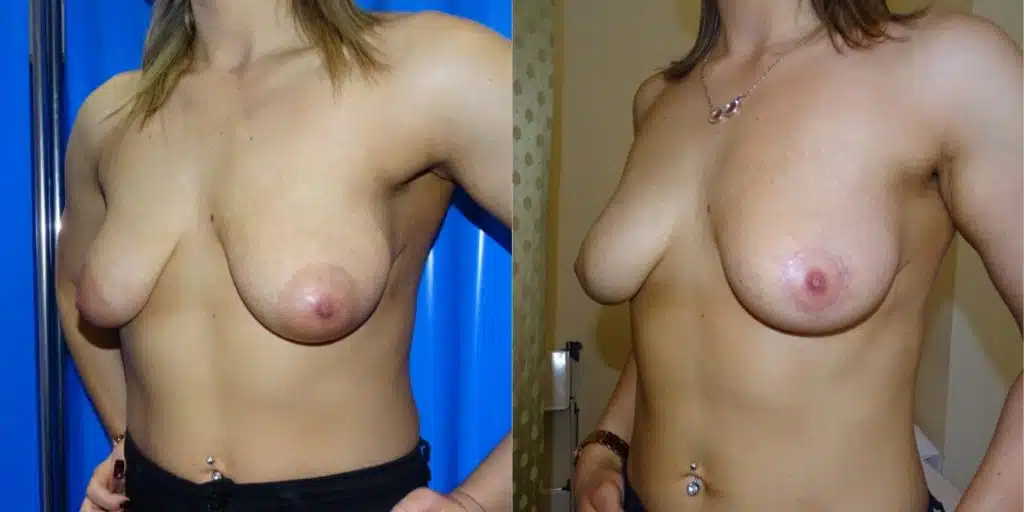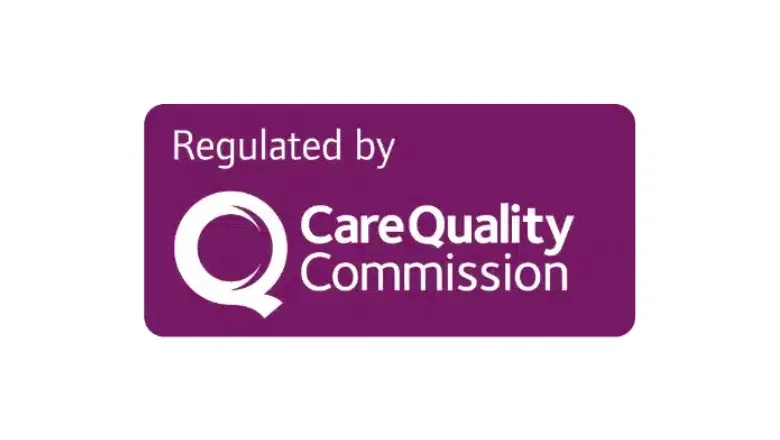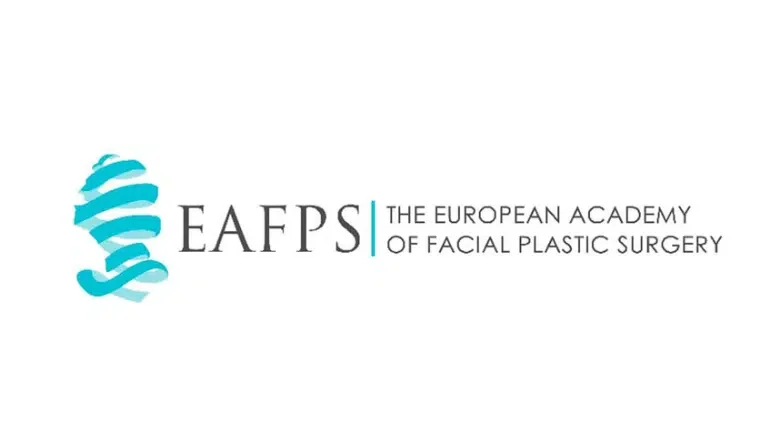Do you feel uneasy or self-aware about the look of your nipples or the area around them, known as the areola?
Do you wish for smaller areolas or shorter nipples?
Or maybe you’re struggling with inverted nipples that fold inward instead of sticking out?
Our expert surgeons at Centre for Surgery in London specialise in various types of breast surgeries, including fixing inverted nipples and making your areolas smaller. Our goal is to help you feel more confident and comfortable with the way your breasts and nipples look. We can address a range of issues like the position of your nipples, unusually large areolas, flat or inverted nipples, and more. Here at Centre for Surgery, we understand that everyone is different. That’s why we offer tailor-made breast procedures to suit the unique shape and appearance of each individual’s breasts and nipples.
RELATED: Nipple Reshaping – Benefits Of Areola & Nipple Surgery
What Are Inverted Nipples?
Inverted nipples happen when the breast duct tissue is shorter and tighter than usual. In simple terms, this means that the muscle on the inside of the nipple is stronger and pulls more than the muscle on the outside. This causes the nipple to stay tucked in, rather than protruding out as is typical.
Some people might find that their nipples invert from time to time, while for others, it’s a constant condition. It’s also quite common to see a slight difference in how noticeable the inverted nipples are between the two breasts. This is known as mild asymmetry, where one nipple might be more inward or more prominent than the other.
What Can Cause Nipple Inversion?
Inverted nipples can be caused by a variety of factors, including but not limited to:
- Evident at Birth and Genetic Variants: Some people are born with inverted nipples, and it may run in the family.
- Pregnancy & Breastfeeding: Hormonal changes and the physical stretching of breast tissues can sometimes lead to nipple inversion.
- Rapid and Significant Weight Loss: Losing a lot of weight quickly can result in changes to the breast tissue, causing the nipples to invert.
- Ptosis or Breast Drooping: The natural sagging of breasts due to age or other factors can pull the nipples inward.
- Gynaecomastia: This condition, generally affecting men, results in enlarged breast tissue and can also cause nipple inversion.
- Recurrent Breast Infections or Inflammations: Conditions like abscesses, mastitis, or mammary duct ectasia can alter the breast tissue and result in inverted nipples.
- Paget’s Disease, Breast Cancer, Inflammatory Breast Cancer: These serious medical conditions can cause changes in the breast tissue, including nipple inversion.
- Tuberculosis: This infectious disease can affect the chest area, including the breast tissue, which may result in inverted nipples.
Types of Inverted Nipples
Inverted or flat nipples are not uncommon, affecting as many as 10% of women. Some women are born with this condition, whereas others may develop inverted nipples later in life, often after breastfeeding. The root cause usually involves a mix of shortened milk ducts, fibrous connective tissue between the milk ducts, and a lack of adequate soft tissue support beneath the nipple.
RELATED: The 3 Grades Of Inverted Nipples
The extent of nipple inversion varies from person to person. Some may find that their nipples can easily be everted (pulled out), while in others, the nipples remain inverted persistently. The condition is generally categorised into different grades, each requiring distinct approaches for correction:
Mild Cases (Grade I)
In these instances, the inverted nipple can be pulled out manually and will remain in an everted position for a while without any ongoing tension. These cases can often be treated using non-surgical methods, such as suction devices or short-term nipple piercing. For women with small breasts who are considering breast augmentation, this surgery can also help correct Grade I inverted nipples, making it an ideal solution for them.
RELATED: How to Treat an Inverted Nipple Without Surgery
Intermediate Cases (Grade II)
For Grade II cases, although the nipple can be everted, it tends to retract quickly. Surgery is typically the recommended course of action here. The procedure involves cutting the fibrous tissue that’s causing the inversion, but preserving the milk ducts whenever possible. This approach allows for the potential of future breastfeeding.
Severe Cases (Grade III)
In the most severe cases, the nipple cannot be pulled out at all, making inverted nipple surgery essential. The procedure will involve severing all the tissue tethers, including the milk ducts, and using local tissue flaps to provide additional soft tissue support under the nipple. While this is effective in correcting the inversion, it comes with a downside: the patient will likely lose the ability to breastfeed and may experience reduced nipple sensation.
Areola Reduction
Breast and nipple changes can occur for a variety of reasons, including pregnancy, breastfeeding, and ageing. For some women, these changes not only result in inverted nipples but also in a transformation of the areola. It may become wider, darker, and thicker, sometimes accompanied by breast sagging, also known as breast ptosis.
For many women, these changes can be a source of self-consciousness, especially if the enlarged or darkened areolas become visible through clothing. Additionally, if a woman is considering undergoing breast augmentation or a breast lift, the more prominent areolas might become even more noticeable post-surgery.
In such cases, areola reduction can be a beneficial addition to the planned breast surgery. By reducing the size of the areola, it becomes more proportionate to the newly shaped breasts, creating a more harmonious appearance. This is particularly effective when carried out in conjunction with other breast surgeries like breast augmentation or a breast lift.
Areola reduction surgery typically involves removing a circular portion of the outer areolar edge and then suturing it to create a smaller, more aesthetically pleasing circle. This can not only boost your confidence but also provide you with a more balanced, natural-looking breast contour.
About Nipple Surgery at Centre for Surgery
Plastic surgery is an incredibly versatile field, offering customisable solutions for a range of concerns, including those related to the nipples. Nipples are unique to each individual, varying in size, shape, and colour. Importantly, there’s no single “standard” nipple to aspire to. If you’re feeling uneasy or self-conscious about the appearance of your nipples, rest assured that medical professionals have seen all kinds of cases—so there’s nothing to be embarrassed about. In the UK alone, it’s estimated that nearly five million women have inverted nipples or flat nipples, so you’re certainly not alone in seeking a solution.
RELATED:Which nipple or areola correction procedure is right for me?
When you consult with a surgeon at Centre for Surgery, they’ll assess your specific circumstances before recommending an appropriate course of action. Nipple correction surgery is generally a straightforward and minimally invasive procedure. It usually doesn’t require general anaesthesia and can be completed within 30 minutes to an hour. This means you can return home shortly after the operation, making it a convenient option for those with busy lives.
If you have multiple concerns regarding the appearance of your breasts, it’s possible to combine nipple correction with other procedures, such as areola reduction or breast augmentation. The goal is to work closely with your surgeon to develop a tailor-made treatment plan that addresses all of your needs and preferences.
Why is Nipple Correction Surgery So Popular?
Nipple correction surgeries have seen a dramatic rise in popularity, not just in the UK but globally. According to a recent survey by the British Association of Plastic, Reconstructive and Aesthetic Surgeons (BAPRAS), there has been a 30% increase in the number of women seeking smaller nipples just over the past year. Interestingly, while the demand for smaller nipples is growing, the most popular type of nipple surgery remains inverted nipple correction.
At our Centre for Surgery clinic in London, we frequently consult with women who are seeking solutions for inverted or flat nipples. These cases range from mild to severe, and many of these women describe their condition as a long-term source of discomfort and self-consciousness. We also see a number of women who are concerned about having long (often described as ‘floppy’) and/or puffy nipples.
Many of these physical changes are often observed after breastfeeding. In these cases, the nipples can darken and thicken, and the areolas may widen as well. The emotional toll these changes can take is significant; it can lead to feeling less confident and even embarrassed in social situations or intimate moments.
The increasing popularity of nipple correction surgery is likely driven by a greater societal openness about cosmetic procedures, as well as advancements in surgical techniques that make the procedures more accessible and less invasive. This has led to a surge in women who are opting for surgical intervention to either regain their pre-pregnancy bodies or simply achieve the aesthetic they’ve always desired.
Nipple-Areola Surgery FAQs
What Will My Recovery Be Like?
After your surgery, the treated areas will be covered with sterile dressings to keep them clean and protected. You’ll need to keep these dressings on for about 5 to 7 days. At that point, your doctor will remove them to check how your healing is going and clean the surgical areas.
You might also be advised to wear specific types of clothing depending on what kind of nipple surgery you’ve had. For instance, you might wear a padded bra if you had inverted nipple surgery or a special pressure garment if you underwent surgery for gynaecomastia.
As for scarring, you can expect to see firm, pink scars for at least the first six weeks after your operation. Over the course of two months, they might stay about the same size, but generally, they’ll begin to fade away over the next two years.
How Long Is the Recovery Period for Nipple Correction Surgery?
Recovering from nipple correction surgery is usually a quick process and doesn’t involve many complications. You may feel a bit of discomfort around the area where the surgery was performed. Some people also notice minor bruising and swelling, but this should improve over a few weeks, depending on your level of activity.
In terms of feeling in your nipples, you might notice some temporary numbness or reduced sensation. However, this is considered normal and should get better within a few days.
Most people find they can go back to work after just a few days. In some cases, you might even feel up to it the day after your surgery. That said, you should avoid heavy exercise or strenuous activities for about 7 to 10 days following the procedure.
What Are the Potential Risks or Side Effects of Nipple Correction Surgery?
All surgeries come with some risks, although complications from nipple correction surgery are uncommon. Potential risks can include nerve damage, scarring, bruising, bleeding, and infection. One important thing to consider is the possible impact on your ability to breastfeed in the future. Typically, nipple sensitivity doesn’t change much after the surgery and usually remains about the same as it was before the operation.
What Kind of Scars Will I Have After Inverted Nipple Surgery?
The appearance of scars after inverted nipple surgery largely depends on how well you heal and the condition of your skin. Your surgeon’s technique and the size of the incisions they make will also play a role. Generally speaking, most people find that their scars fade considerably over time and become less noticeable.
Why Choose Centre for Surgery for Nipple Correction Surgery?
When it comes to something as personal and sensitive as nipple correction surgery, it’s essential to choose a provider that combines medical expertise with compassionate care. At Centre for Surgery, we offer just that—a blend of professional proficiency and personalised attention that sets us apart.
World-Class Expertise
Our surgeons are highly trained in the intricacies of breast surgeries, including inverted nipple correction, areola reduction, and more. With years of experience and an unblemished track record, our surgical team is adept at customising each procedure to address your unique concerns. Whether it’s correcting inverted nipples or resizing areolas, our surgeons employ the latest techniques to ensure your satisfaction.
Personalised Care
At Centre for Surgery, we understand that every individual’s needs are unique. That’s why we offer a fully customised treatment plan that meets your specific needs and preferences. From your initial consultation to the follow-up appointments, our medical staff provides supportive and attentive care to guide you through your journey.
State-of-the-Art Facilities
Located in the heart of London, our clinic is equipped with cutting-edge technology and modern amenities. This ensures you receive the highest standard of care in a comfortable and safe environment.
Patient Testimonials
Don’t just take our word for it; listen to our satisfied patients. Here are some of their experiences:
- “I couldn’t be happier with the results. The team at Centre for Surgery was fantastic, making me feel comfortable every step of the way.” – Emily
- “I was quite nervous going in, but the staff made me feel at ease immediately. My surgeon was incredibly skilled and the results were beyond my expectations.” – Sarah
- “It has been a life-changing experience. The level of care I received at Centre for Surgery was exceptional. Highly recommend!” – Lucy
Easy Consultation Booking
We’ve made it incredibly simple for you to take the first step. To book your consultation, you can:
- 📞 Phone: 0207 993 4849
- 📧 Email: contact@centreforsurgery.com
- 📍 Address: 95-97 Baker Street, London W1U 6RN
For more information and useful insights, please visit our Plastic Surgery Blog.
When it comes to nipple correction surgery, Centre for Surgery is the name you can trust. We look forward to helping you achieve your goals and reclaim your confidence.





